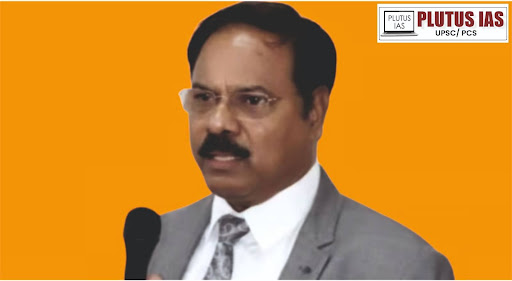17 Dec PRELIMS BIT: REMOVAL OF THE JUDGES OF THE HIGHER JUDICIARY
PRELIMS BIT: REMOVAL OF THE JUDGES OF THE HIGHER JUDICIARY
Syllabus mapping:
GS-2: Indian Polity: Judiciary appointments and removal
For Prelims:
Constitutional provisions and key Facts related to the Judges Inquiry Act 1968.
Why in the news?
Fifty-five Members of Parliament (MPs) from the Rajya Sabha have submitted a motion to remove a sitting judge of the Allahabad High Court. This move is significant as it underscores concerns regarding judicial accountability and independence, highlighting the rare and serious process of judicial removal in India.

Procedure for Removal of Judges of Higher Judiciary
Constitutional Provisions: Articles 124 and 217 of the Constitution provide for the removal of Supreme Court and High Court judges.
Grounds for removal:
1. Proved misbehavior
2. Incapacity
Role of the President: The President removes the judge after a motion is passed in both Houses of Parliament.
Parliamentary Approval:
1. The motion must be passed:
2. By a majority of the total membership of that House.
3. By a special majority: At least two-thirds of members present and voting in the same session.
Definition of Grounds: The Constitution does not define the terms ‘proved misbehavior’ or ‘incapacity.’
Supreme Court’s Interpretation:
Misbehavior includes willful misconduct, corruption, lack of integrity, or moral turpitude.
Incapacity refers to medical conditions, including physical or mental incapacity.
The Judges (Inquiry) Act, 1968:
Initiation of Motion: It requires signatures from at least 50 members of the Rajya Sabha or 100 members of the Lok Sabha.
Admittance of Motion: After consultation, the Chairman (Rajya Sabha) or Speaker (Lok Sabha) may admit or reject the motion.
Investigation by a Committee: If admitted, a three-member committee is formed consisting of:
1. A Supreme Court judge
2. A High Court judge
3. A distinguished jurist
The committee investigates the charges.
Committee Findings:
If the judge is absolved of charges, the motion cannot proceed further.
If found guilty of misbehavior or incapacity:
The committee submits its report to Parliament.
Final Parliamentary Approval: The motion is debated in both Houses of Parliament. Each House must pass the motion with a special majority.
Presidential Removal: Once the motion is passed, the President issues an order for the removal of the judge.
1950-2024: Till date no higher judiciary judge has been removed. following is the past attempts.
Past Removal Attempts:
Judge
|
Court
|
Year
|
Allegations
|
Outcome
|
| Justice V. Ramaswami |
Punjab & Haryana High Court |
1993 |
Accused of extravagant
spending on his official residence. |
The motion failed as Congress MPs abstained from voting despite the committee finding him guilty. |
|
|
Calcutta High Court |
2011 |
| Accused of misappropriation of funds. Refused to resign even after being found guilty. |
|
Motion passed in Rajya Sabha but before Lok Sabha could vote, he resigned. |
|
|
Sikkim High Court |
2011 |
| Accused of corruption during consideration for elevation to the Supreme Court. |
|
Objected to committee member’s bias; later resigned, alleging unfair treatment as he was Dalit. |
| Justice J.B. Pardiwala |
Gujarat High Court |
2015 |
| Made casteist remarks on reservations in a sedition case. |
|
| Remarks were expunged from the judgment; the motion did not proceed further. |
|
|
|
Madhya Pradesh High Court |
2015 |
| Alleged sexual harassment by a woman employee. |
|
| The in-house committee found insufficient material to prove the allegations; the motion did not proceed. |
|
| Justice C.V. Nagarjuna Reddy |
|
| Andhra Pradesh & Telangana HC |
|
2016-
2017 |
Accused of victimizing
a Dalit judge, casteism, and amassing wealth. |
| Both motions failed as supporting MPs withdrew, dropping below the required number of signatories. |
|
| Justice Dipak Misra |
| Chief Justice of India (CJI) |
|
2018 |
| Accused of arbitrarily assigning cases and showing preferential treatment to judges. |
|
| The motion was rejected by the Chairman, Venkaiah Naidu, as allegations related to internal matters. |
|
| Justice S.N. Shukla |
|
2018 |
Accused of involvement in a medical college admission scam. |
| Refused to resign; no cases were assigned until retirement. CBI filed corruption charges in 2023. |
|
Prelims question:
Q. With reference to the removal of the judges in the higher judiciary Consider the following statement:
1. The judges of the Supreme Court and High Court can be removed on the same grounds.
2. The Constitution does not define the grounds given in the Constitution for the removal of the judges in the Higher Judiciary.
3. The removal procedure of the judges in the higher judiciary is a quasi-judicial procedure.
How many of the above-given statements are correct?
A. Only one
B. Only two
C. All three
D. None
ANSWER: C





No Comments